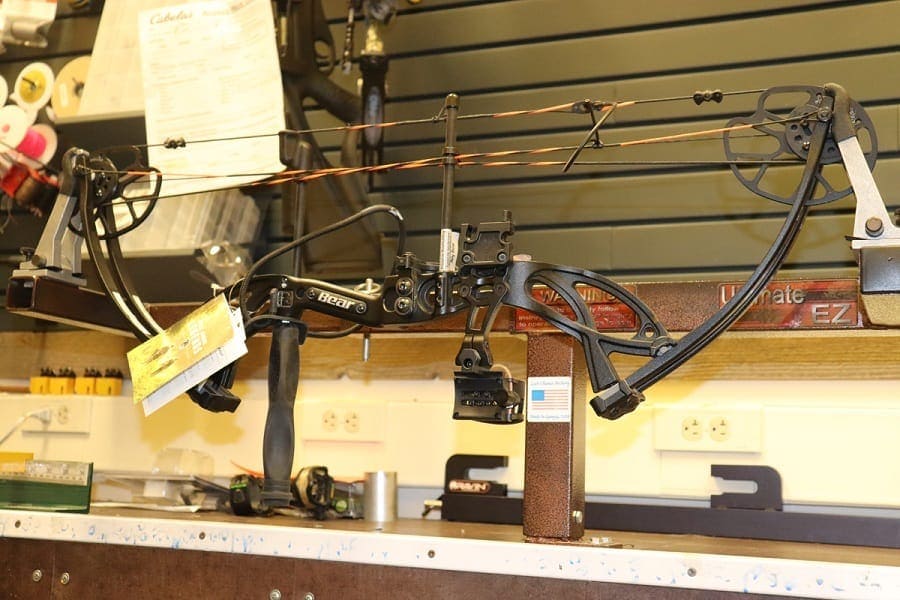Over the course of the next month, archery seasons in the vast majority of states will be coming to a close. When season draws to an end, many archers store their gear away until spring, when warmer weather allows for more hospitable practice conditions.
Contents (Jump to Topic)
ToggleHowever, few archers give their equipment so much as a second look prior to setting it aside. As a result, one misses out on the perfect opportunity to ready their bow for the year ahead. By giving your bow, and related accessories a thorough post-season checkup, you can prevent a number of potential issues from arising in the future.
The following are several items of interest, which should be seen to, before storing your bow away for any lengthy period of time.
Check Your Strings and Cables
While a compound bow’s strings and cables are inherently durable, they are prone to wear over the course of several seasons.
If a bow’s string or cables were to fail, the resulting damage could be catastrophic. That’s why it is essential to inspect these components on a regular basis.
During deer season, a bow’s string and cables take their fair share of abuse. These critical components are exposed to wear at the hands of the elements, as well as damage that results from inadvertent contact with rough or abrasive surfaces.
Luckily, the bulk of these irregularities can be easily detected during a brief visual inspection.
Carefully study your bow’s string and cables, looking for any apparent cuts, nicks, or signs of serious fraying. If such defects are found, replacement will be necessary.
read.. how to store your hunting gear
It is also wise to wax your bow’s string and cables upon completing your inspection.
Inspect Your Bow’s Limbs
During the draw cycle, a compound bow’s limbs store an immense amount of kinetic energy. This energy is then discharged when the bow’s string is released.
However, on occasion, limbs do crack and delaminate, presenting a troubling situation. When such circumstances arise, further use should cease until the damaged limb can be replaced.
If the limb of a bow were to fracture mid-draw cycle, the consequences could be dire. An archer would likely experience a violent reaction, and could even be struck by debris as the bow in question fails directly in front of them.
This is not only difficult to contemplate, but can be hazardous as well.
A bow’s limbs should be carefully inspected while searching for any cracks, bubbles, or splintering. Additionally, a cotton ball can be rubbed across the surface of each limb to identify small cracks that are difficult to spot by eye.
Cracks of this nature will snag the exposed fibers of a cotton ball, leaving behind a visual marker.
Check For Cam and Idler Defects
A bow’s cam(s) and idler pulley are put to the test during every draw cycle. As these components pivot, they come under stress, in much the same manner as that placed upon a bow’s limbs.
However, due to their rotating operation, cam and idler pulleys are prone to specific issues, especially if a bow has been dry-fired in the past.
Cam and idler pulleys can also be structurally damaged when stuck against solid objects. If such damage is inflicted upon the string track segment of a cam or idler pulley, string abrasion or derailment can result.
Any irregularities found when inspecting these components should be taken seriously, and subsequent repair should be conducted by a qualified bow technician.
A bow’s cam and idler pulleys can be easily inspected by eye. Check to ensure that each pulley is free of nicks or other damage along the string track, and that each pulley is mounted squarely along its axis.
Ensure That All Bolts Are Tight
As a bow is fired, a significant release of kinetic energy takes place. A bow’s limbs release all energy that has been stored during the draw cycle, redirecting this energy to the arrow that is propelled down-range.
As this occurs, a small, yet notable amount of shock is imparted upon a bow’s riser, to which various accessories are affixed.
With time, this shock and vibration can cause bolts that hold a bow’s arrow rest and sights to loosen. If these bolts loosen to a sufficient degree, components of this nature can shift slightly, thereby negatively affecting a bow’s accuracy.
It is always advised to ensure that all accessory related bolts are present and tight, at certain intervals over the course of the year.
In the vast majority of cases, this can be done with an allen wrench, and takes no more than a few seconds to complete. If loose bolts are detected, a small amount of Loctite can be applied to prevent future issues.
Inspect Arrows
While many archers understand the value of periodically inspecting their bows, far fewer give their arrows the same amount of attention.
This can be a mistake that can lead to a multitude of issues, as an arrow must be capable of accepting every bit of energy that is transferred from a bow’s limbs and cams upon the shot’s release.
In the past, there have been many reported arrow failures that have resulted in both personal injuries to archers, as well as damage to the bow from which the arrow was fired.
In any event, arrows should be inspected regularly, or even better, at the conclusion of every practice session.
Arrows should be carefully checked for any signs of cracking or splintering. While the entire arrow shaft should be inspected, special focus should be placed upon each end of the arrow, at its nock and insert junctions.
A carbon arrow can also be flexed slightly in the hand to validate its structural integrity. If any damage is noted, the offending arrow should be discarded immediately.
Expect The Unexpected
An archer should never assume that his or her bow is in top-notch condition, without having given it a thorough inspection. Instead, expect the unexpected, and stay on guard against possible mechanical issues that can rob a bow of its functionality.
In many cases, further damage can be prevented by remedying any issue that is encountered, in a prompt and proactive manner.
This winter, give your bow a thorough check-up before sitting it aside. Doing so might be the only thing that prevents an unfortunate mishap that renders your bow inoperable, or keeps you from being injured, should an untimely component failure occur.







